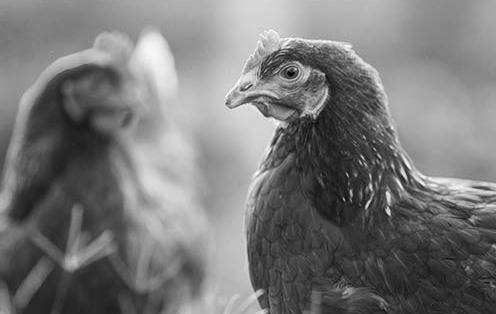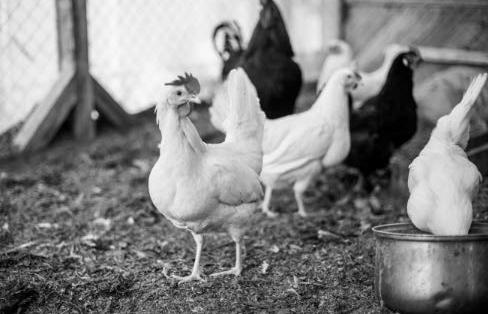-
Cosgrove, A. (1962). An Apparently New Disease of Chickens: Avian Nephrosis. Avian Diseases, 6(3), 385-389. doi:10.2307/1587909
-
Eterradossi N. and Saif Y. M.: „Infectious Bursal Disease” In Diseases of Poultry, 14th ed. John Wiley & Sons, Ames, Iowa, USA, 2020; pp. 257-283.
-
OIE Terrestrial Manual (2018), Chapter 3.3.12. – Infectious bursal disease (Gumboro disease).
-
Mahgoub, An Overview of Infectious Bursal Disease, 2012
-
Jackwood D.J., Sommer-Wagner S.E., Crossley B.M., Stoute S.T., Woolcock P.R. & Charlton B.R. (2011). Identification and pathogenicity of a natural reassortant between a very virulent serotype 1 infectious bursal disease virus (IBDV) and a serotype 2 IBDV. Virology, 420, 98–105.
-
Shini, S., Huff, G.R., Shini, A. and Kaiser, P. (2010) Understanding stress-induced immunosuppression: Exploration of cytokine and chemokine gene profiles in chicken peripheral leukocytes. Poultry Science 89: 841-851.
-
Alkie TN, Rautenschlein S. Infectious bursal disease virus in poultry: current status and future prospects. Vet Med (Auckl). 2016;7:9-18. Published 2016 Jan 19. doi:10.2147/VMRR.S68905

Gumboro disease
About the infectious bursal disease (IBD)
Another contagious disease for chickens is caused by the infectious bursal disease virus (IBDV). The condition was described first in Gumboro, Delaware, USA which produced the name "Gumboro disease".2 The virus can infect a variety of poultry, but severe disease symptoms usually only show in young chickens between three and six weeks of age.2,3 It has also shown to be highly resistant to many physical and chemical agents, which makes persistence likely and carry the infection over to succeeding flocks.2
In fully susceptible flocks Gumboro disease appears suddenly with a rapid incubation period of 2-3 days.2 The clincal symptoms itself are often vague, since mostly the first Gumboro infections in a barn are more acute.2 Clincal symptoms of severe cases include prostration, diarrhea and sudden death in 3-6 week old chickens.3 Recurrent outbreaks in succeeding flocks are often less severe.2
But the most damaging properties of Gumboro disease are silent. The virus is having effects on the chickens immune system, since it causes depletion of immune cells in the Bursa fabricius.4 The result is immunosuppression, which remains a hidden threat that could lead to vaccine failure and disease outbreak.6


How did the Gumboro disease evolve over the years?:
After the first reference IBD was referred to as "avian nephrosis", because visual changes have been found mostly in the kidneys.1 Later on, the IBD virus was found as the causative agent and its immunosuppressive effect has been described.7 Due to its segmented double-stranded RNA genome, IBDV is prone to genetic variation.7
These different strains can be discriminated into three different groups on the signs and clinical lesions they induced under laboratory conditions. The three groups have been named: "variant", "classical" and "very virulent".3
With the technical possibility of detection of genetic sequences (through RT-PCR technology), these methods could be used to describe IBDV more accurately.5
How to protect flocks against IBD?:
Before the first attenuated vaccines were developed, Gumboro disease was kept under control through intended exposure of the flock to the field virus at a young age. The young chicks usually had maternal antibodies, which led to low clinical signs in these animals. After the immunosuppressive effect of the early IBD infections were discovered, this became less appealing, improving the need for vaccination.2
For protection of chickens at a very young age, the immunisation of breeder flocks is especially important in order to confer parental immunity to their progeny.2 To prolong this immunity many choices of live vaccines are available, but the time of vaccination has to be carefully determined.2
Regarding the virulence of the vaccine viruses, these vaccines are classified as: "mild", "mild intermediate", "intermediate plus" or "hot".3 Each vaccine type is suitable for the different local requirements depending on the infective pressure and/or level of maternal antibody titres.
Careful selection of the Gumboro vaccine strain might be helpful in managing immunosuppressive effects and improve the total performance of your complete vaccination protocol.
References add
